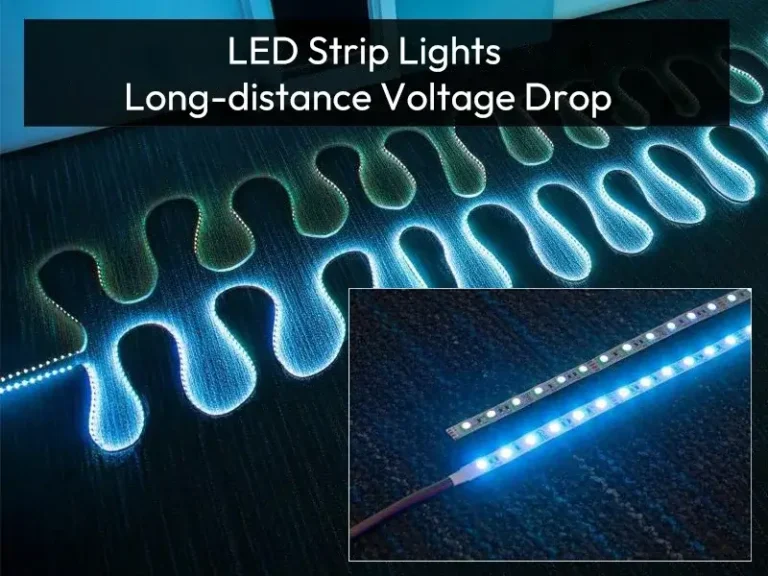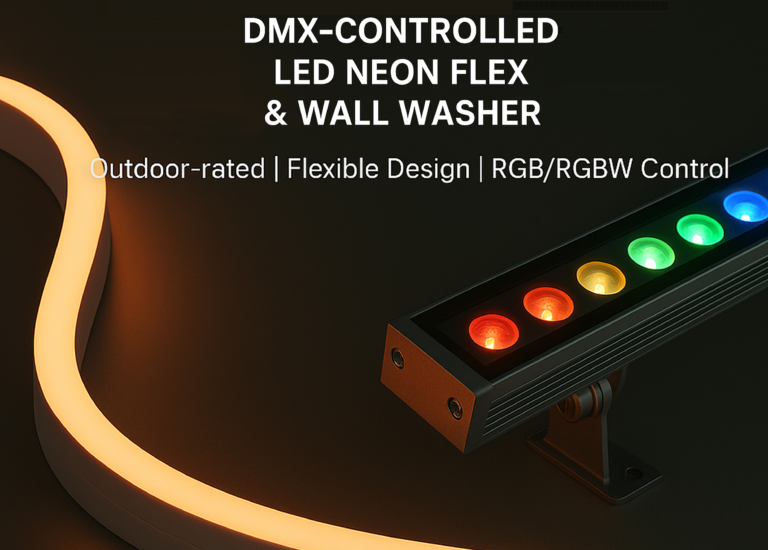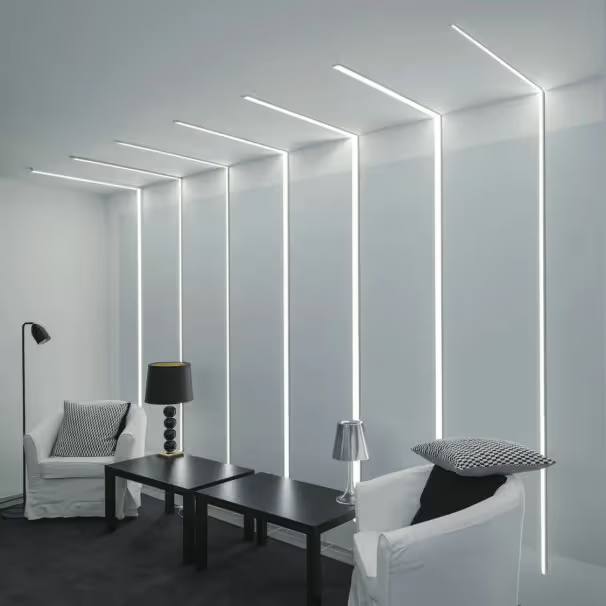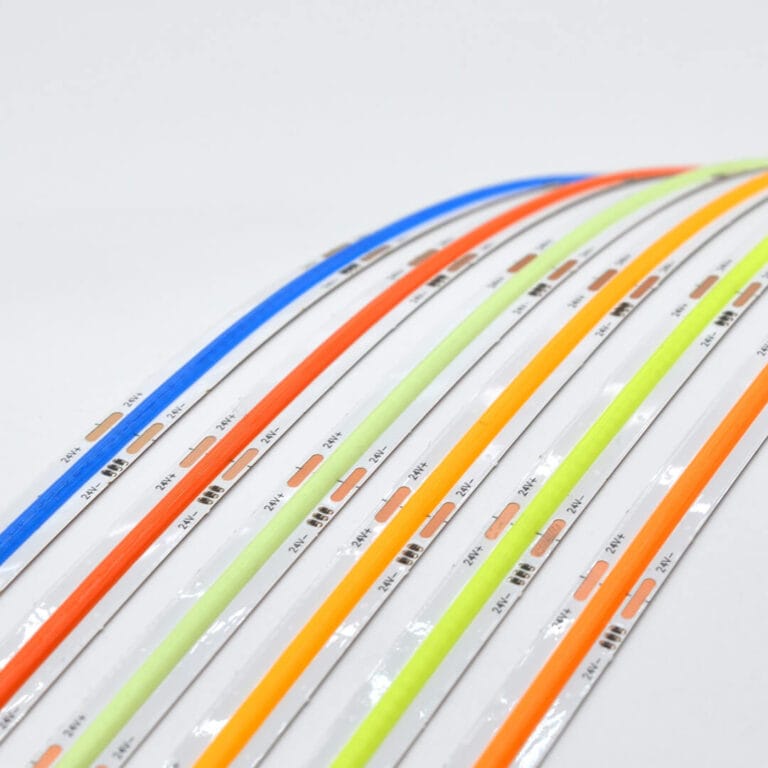DMX512 and SPI (Serial Peripheral Interface) are two different communication protocols used to control LED strips, each with its own characteristics and applications:
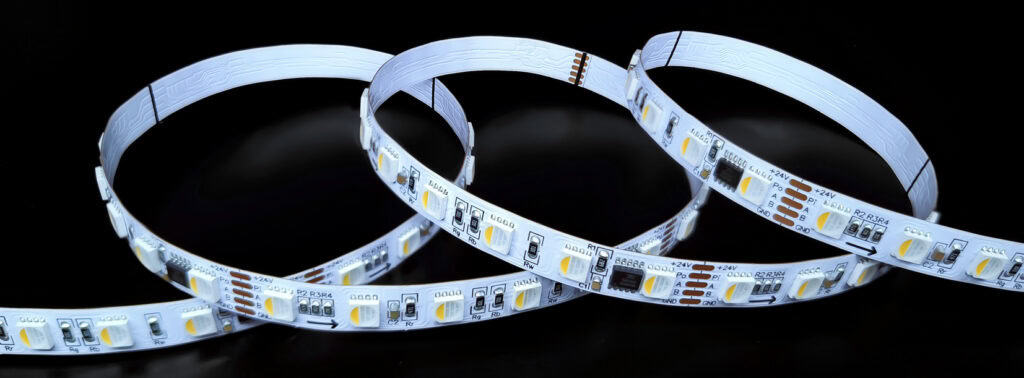
1. DMX512 LED Strip:
Protocol: DMX512 (Digital Multiplexing 512) is a standard protocol for lighting control. It allows the transmission of up to 512 channels of control data over a single DMX cable, which is a very large capacity.
Control: DMX512 is commonly used in professional lighting setups where precise control of many fixtures (not just LED strips) is required. It can control all aspects of lighting such as intensity, color and movement.
Applications: DMX512 LED strips are commonly used in stage lighting, architectural lighting and large installations where synchronized control of multiple lighting fixtures is critical. They are often integrated into large DMX lighting networks controlled by lighting consoles or software.
Flexibility: DMX512 LED strips can be individually addressed to change color and brightness, but the level of control is often more focused on the entire strip or group of strips rather than the individual LEDs in the strip.
2. SPI LED Strip:
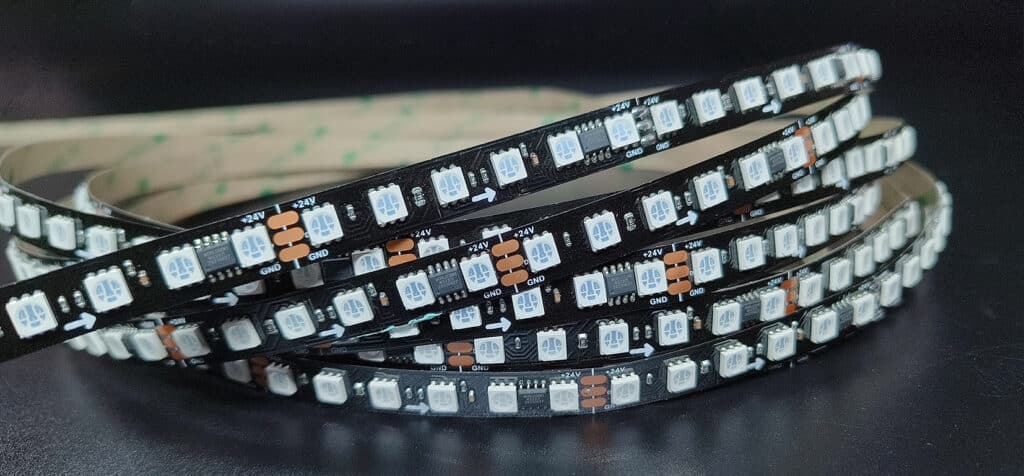
Protocol: SPI (Serial Peripheral Interface) is a synchronous serial communication protocol. It is used to control individually addressable LEDs, where each LED can be independently controlled to display a different color or brightness.
Controlling an SPI LED strip provides precise control of each LED in the strip. Data is sent sequentially down the line, and each LED can interpret its own data to achieve complex lighting effects and animations.
Applications: SPI LED strips are popular for applications that require dynamic, detailed lighting effects. They are commonly used in art installations, digital signage, game settings and DIY projects where programmable lighting is a key feature.
Integration: SPI LED strips require a controller that can generate SPI signals and manage the data transfer to the LEDs. Microcontrollers such as Arduino or specialized LED controllers are often used to interface with SPI LED strips.
Key Differences:
Control granularity: DMX512 can control an entire strip or group of strips, whereas SPI can control down to individual LEDs.
Usage: DMX512 is more commonly used in professional lighting environments where centralized control of multiple fixtures is required, while SPI is suitable for applications that require complex, customizable lighting effects.
Complexity: DMX512 setups are more complex to configure and manage due to the larger control infrastructure required, while SPI setups are simpler for smaller projects, but may require programming skills to achieve advanced effects.
In summary, the choice between DMX512 and SPI LED strips depends on the specific requirements of the lighting installation or project. DMX512 is suited to specialized setups that require centralized control, while SPI offers greater flexibility and granularity for creative lighting applications.
